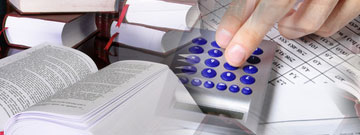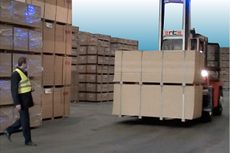Misją Instytutu jest dzialalność naukowo-badawcza prowadząca do nowych rozwiązań technicznych i organizacyjnych użytecznych w kształtowaniu warunków pracy zgodnych z zasadami bezpieczeństwa pracy i ergonomii oraz ustalanie podstaw naukowych do właściwego ukierunkowywania polityki społeczno-ekonomicznej państwa w tym zakresie.

John Wiley & Sons, Inc., New York, USA, 1993
|
| Preface (XIII) |
| Acknowledgments (XVII) |
| Introduction (1) |
| PART I. FUNDAMENTAL CONCEPTS |
| 1. Fundamental Noise Mechanisms (5) |
| 1.1. Noise Definition (5) |
| 1.2. Noise Properties (6) |
| 1.3. Thermal Noise (8) |
| 1.4. Noise Bandwidth (11) |
| 1.5. Thermal Noise Equivalent Circuits (17) |
| 1.6. Addition of Noise Voltages (18) |
| 1.7. Correlation (21) |
| 1.8. Noise Circuit Analysis (22) |
| 1.9. Excess Noise (25) |
| 1.10. Low-Frequency Noise (25) |
| 1.11. Shot Noise (27) |
| 1.12. Capacitance Shunting of Thermal Noise: kT/C Noise (30) |
| Summary (32) |
| Problems (32) |
| References (37) |
| 2. Amplifier Noise Model (38) |
| 2.1. The Noise Voltage and Current Model (38) |
| 2.2. Equivalent Input Noise (39) |
| 2.3. Measurement of En and In (41) |
| 2.4. Input Noise Examples (42) |
| 2.5. Noise Figure (NF) and Signal-to-Noise Ratio (SNR) (44) |
| 2.6. Optimum Source Resistance (45) |
| 2.7. Noise Resistance and Noise Temperature (46) |
| 2.8. Noise in Cascaded Networks (47) |
| Summary (48) |
| Problems (49) |
| References (52) |
| 3. Noise in Feedback Amplifiers (53) |
| 3.1. Noise and Some Basic Feedback Principles (53) |
| 3.2. Amplifier Noise Model for Differential Inputs (55) |
| 3.3. Inverting Negative Feedback (63) |
| 3.4. Noninverting Negative Feedback (65) |
| 3.5. Positive Feedback (67) |
| Summary (69) |
| Problems (70) |
| References (75) |
| PART II. NOISE MODELING |
| 4. Cad for Noise Analysis (79) |
| 4.1. History of SPICE (81) |
| 4.2. SPICE Capabilities (81) |
| 4.3. SPICE Description (81) |
| 4.4. Amplifier Noise Sources (83) |
| 4.5. Modeling 1/f Noise (86) |
| 4.6. Modeling Excess Noise (88) |
| 4.7. Random Noise Generator (95) |
| 4.8. Finding Noise Bandwidth Using PSpice (98) |
| 4.9. Integrating Noise over a Frequency Bandwidth (101) |
| 4.10. Model Reduction Techniques (103) |
| Summary (104) |
| Problems (104) |
| References (107) |
| 5. Noise in Bipolar Transistors (109) |
| 5.1. Hybrid-π Model (109) |
| 5.2. Noise Model (112) |
| 5.3. Equivalent Input Noise (114) |
| 5.4. Noise Voltage and Noise Current Model (116) |
| 5.5. Limiting Case for Midband Noise (119) |
| 5.6. Minimizing the Noise Factor (120) |
| 5.7. 1/f Noise Region (122) |
| 5.8. Noise Variation with Operating Point (123) |
| 5.9. Burst or Popcorn Noise (126) |
| 5.10. Popcorn Noise Measurement (129) |
| 5.11. Reliability and Noise (132) |
| 5.12. Avalanche Breakdown and Noise (133) |
| Summary (136) |
| Problems (137) |
| References (139) |
| 6. Noise in Field Effect Transistors (140) |
| 6.1. FET Noise Mechanisms (141) |
| 6.2. Noise in MOSFEs (146) |
| 6.3. Noise in JFETs (152) |
| 6.4. Noise in GaAs FETs (154) |
| 6.5. Measuring FET Noise (164) |
| Summary (168) |
| Problems (168) |
| References (170) |
| 7. System Noise Modeling (172) |
| 7.1. Noise Modeling (172) |
| 7.2. A General Noise Model (173) |
| 7.3. Effect of Parallel Load Resistance (175) |
| 7.4. Effect of Shunt Capacitance (177) |
| 7.5. Noise of a Resonant Circuit (178) |
| 7.6. PSpice Example (179) |
| Summary (181) |
| Problems (182) |
| Reference (183) |
| 8. Sensors (184) |
| 8.1. Voltaic Sensor (185) |
| 8.2. Biased Resistive Sensor (186) |
| 8.3. Optoelectronic Detector (188) |
| 8.4. RLC Sensor Model (194) |
| 8.5. Piezoelectric Transducer (196) |
| 8.6. Transformer Model (198) |
| Summary (202) |
| Problems (203) |
| References (204) |
| PART III. DESIGNING FOR LOW NOISE |
| 9. Low-Noise Design Methodology (207) |
| 9.1. Circuit Design (207) |
| 9.2. Design Procedure (208) |
| 9.3. Selection of an Active Device (210) |
| 9.4. Designing with Feedback (212) |
| 9.5. Bandwidth and Source Requirements (213) |
| 9.6. Equivalent Input Noise (214) |
| 9.7. Transformer Coupling (217) |
| 9.8. Design Examples (218) |
| Summary (221) |
| Problems (221) |
| 10. Amplifier Design (223) |
| 10.1. Transistor Configurations (224) |
| 10.2. Common-Emitter Stage (225) |
| 10.3. Single-Supply Common-Emitter Stage (227) |
| 10.4. Noise in Cascaded Stages (231) |
| 10.5. Common-Source-Common-Emitter Pair (232) |
| 10.6. Common-Collector-Common-Emitter Pair (234) |
| 10.7. Common-Emitter-Common-Base Pair (236) |
| 10.8. Integrated BJT Cascode Amplifier (237) |
| 10.9. Differential Amplifier (239) |
| 10.10. Parallel Amplifier Stages (245) |
| 10.11. IC Amplifiers (246) |
| Summary (248) |
| Problems (249) |
| References (251) |
| 11. Noise Analysis of D/A and A/D Converters (252) |
| 11.1. Resistor Networks for D/A Converters (253) |
| 11.2. Noise Analysis of D/A Converter Circuits (255) |
| 11.3. D/A SPICE Simulations (261) |
| 11.4. Noise in a Flash A/D Converter (269) |
| 11.5. A/D SPICE Simulations (272) |
| 11.6. Converting Analog Noise to Bit Errors (275) |
| 11.7. Bit Error Analysis of the Flash Converter (279) |
| 11.8. A/D/A Noise Analysis (282) |
| Summary (283) |
| Problems (283) |
| References (284) |
| PART IV. LOW-NOISE DESIGN APPLICATIONS |
| 12. Noise in Passive Components (289) |
| 12.1. Resistor Noise (289) |
| 12.2. Noise in Capacitors (296) |
| 12.3. Noise of Reference and regulator Diodes (297) |
| 12.4. Batteries (299) |
| 12.5. Noise Effects of Coupling Transformers (299) |
| Summary (304) |
| Problems (304) |
| References (305) |
| 13. Power Supplies and Voltage References (306) |
| 13.1. Transformer Common-Mode Coupling (306) |
| 13.2. Power Supply Noise Filtering (308) |
| 13.3. Capacity Multiplier Filter (309) |
| 13.4. Noise Clipper (310) |
| 13.5. Regulated Power Supplies (310) |
| 13.6. Integrated Circuit Voltage Reference (312) |
| 13.7. Bandgap Voltage Reference (324) |
| Summary (327) |
| Problems (328) |
| References (329) |
| 14. Low-Noise Amplifier Design Examples (330) |
| 14.1. Cascade Amplifier (330) |
| 14.2. Cascode Amplifier (332) |
| 14.3. General-Purpose Laboratory Amplifier (333) |
| 14.4. IC Amplifier with Discrete Input Stages (334) |
| 14.5. Direct-Coupled Single-Ended Amplifier (335) |
| 14.6. ac-Coupled Single-Ended Amplifier (336) |
| Summary (337) |
| References (337) |
| 15. Noise Measurement (339) |
| 15.1. Two Methods for Noise Measurement (339) |
| 15.2. Sine Wave Method (340) |
| 15.3. Noise Measurement Equipment (346) |
| 15.4. Noise Generator Method (356) |
| 15.5. Comparison of Methods (361) |
| 15.6. Effect of Measuring Time on Accuracy (361) |
| 15.7. Bandwidth Errors in Spot Noise Measurements (362) |
| 15.8. Noise Bandwidth (364) |
| Summary (365) |
| Problems (366) |
| References (367) |
| Appendix A. Measured Noise Characteristics of Integrated Amplifiers (368) |
| Appendix B. Measured Noise Characteristics of Field Effect Transistors (377) |
| Appendix C. Measured Noise Characteristics of Bipolar Junction Transistors (385) |
| Appendix D. Random Number Generator Program (400) |
| Appendix E. Answers to Selected Problems (406) |
| Appendix F. symbol Definitions (411) |
| Index (417) |
|
© 2002-2004 Centralny Instytut Ochrony Pracy - Państwowy Instytut Badawczy www.anc.pl, www.ciop.pl |





